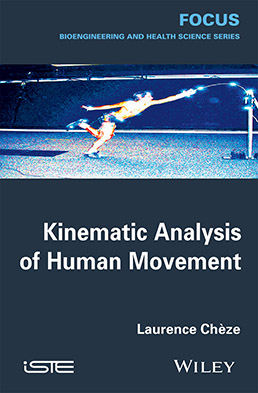
Understanding human motion has, for a long time, involved a multidisciplinary approach encompassing many scientific disciplines: biomechanics, functional anatomy, physiology and neuroscience, among others. Although these different perspectives are all important in order to completely understand motion, it is not realistic to try to cover all these aspects at the same time. This book deliberately focuses only on the kinematic aspects – that is to say, the quantified description of how the human body moves, without looking to understand the causes or its control.
The aim of this book is to provide a basis, both experimental and theoretical, with which to begin to explore the kinematics of human motion. After a quick overview of the contributions made to the analysis of human motion by several famous pioneers and a review of current needs in different domains, this book presents the main types of systems currently available for the study of human movement.
Within this book, the reader will find an overview of one of the most currently used technologies in the study of human movement: the optoelectronic system based on passive markers. The theoretical basis needed to calculate joint kinematics is explained, and a proposition for standardization on an international scale with which to present parameters of motion is defended. One section is entirely dedicated to this delicate issue of measurement errors and their management, and several clinical applications of motion analysis are also outlined.
Following a general presentation of the subject matter, the author briefly presents the most significant historical benchmarks in the understanding of human movement before focusing on the different domains in which motion analysis is currently found.
1. Introduction and State of the Art.
2. The Different Movement Analysis Devices Available on the Market.
3. From Measurement to Interpretation.
4. Errors in Measurement.
5. Some Clinical Applications.
Laurence Chèze is Professor in Mechanics and Biomechanics at Claude Bernard University Lyon 1, France. Director of a multidisciplinary research team in “Biomechanics and Orthopedics”, her specific research interests range from multi-body modeling of the musculoskeletal system and 3D human movement analysis to personalized muscular modeling for clinical research.